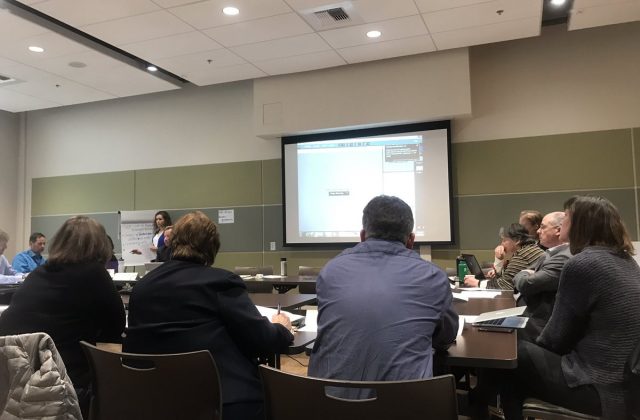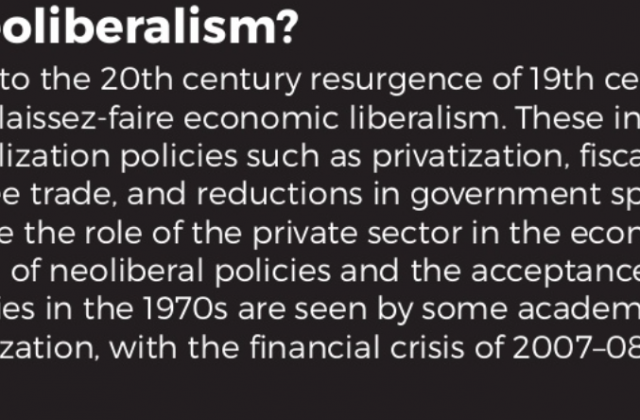First There Was HALA, Now There’s HART: Will it Be Different This Time?
The red light on the dashboard of state government is flashing. There is a growing worry about housing prices at that level of government as well. While Mayor Murray set about to create a high profile committee to wring hands about the “crisis” of housing prices, the State of Washington has taken something of a quieter approach, creating something called the Housing Affordability Response Team or HART. The group was convened to respond to a letter from Governor Inslee to take a look at what is driving up housing prices and impacting affordability. I was hopeful the HART would lead naturally into our request for a budget proviso to take a hard, objective look at housing costs in the state. However, I think now the HART is becoming a state level HALA with the next meeting being a voting meeting about specific recommendations. My guess is that there will be a lot of good or interesting ideas offered: and then the ones that generate money for non-profits will end up getting all the attention and will drive future legislation. I sent the email below to the chair of the Committee Peter Orser and HART member Svenja Gudell.
At the end of that e-mail I closed with this sentence: “During the HALA process I made the mistake of not standing in the road or at least on the side of the road waving my arms. I didn’t raise enough of an alarm then, and so I’m doing what I can now. Thanks for taking my concerns seriously.”
Hello Peter and Svenja,
Price is a funny thing; get out of its way, and price will tell you all you want to know about a market and people in it, what they want, where, and how and whether suppliers can meet that demand. Price tells the story that almost every other data just hints at. Yet politics dictates that when some constituencies are paying too much or too little, we must intervene before we understand how the complex relationships between buyers and sellers resolve, and too often we make things even worse.
When we try to wrestle price into submission and use qualitative, socio-political normative standards to be sure one group doesn’t pay too much or another too little, we end up creating perverse incentives, and often, inflation. Add to this aesthetics, transportation, and a host of other utilities and disutilities we wish to manage for various real or perceived benefits, and you have a real mess. I think we saw that on Thursday and I think my example demonstrates the real damage done when data is misused, misapplied, or misunderstood.
I’d ask that the Committee keep first principles as your measuring stick for any and all proposals you consider.
- Does the proposal add or reduce costs to housing? By how much?
- Does the proposal generate new money for subsidies? How?
- What is the corresponding data point or points for the proposal?
- What is the measurable impact of the proposal on a current housing related problem?
- Will the proposal positively or negatively impact consumer-housing prices? How?
For example, if I suggest direct cash payments of levy dollars to defray the costs of “cost burdened” households (i.e. if a household at 30 percent of Area Median Income is paying $235 above 30 percent of their gross monthly income, just deposit that amount in it’s bank account each month) I’d express it this way:
I think if the HART is going to entertain a grab bag of proposals, it needs to be very diligent about being accountable. If I put Mandatory Inclusionary Zoning (MIZ) on this table, it would be impossible for anyone to support it because it would plainly show that the intervention of mandating performance or fees in lieu would firstly increase overall housing costs and prices, and it wouldn’t correspond to any data point that is relevant to us (e.g. reduction of the number of identified “cost burdened” households).
The HART won’t have much creditability with the people I work with and for (or among the legislature, press, and wider community) tif it does not acknowledge these points and seek better analysis if an answer can’t be had by an outside objective review. This is why we advocated for the proviso for the JLARC study in the Senate budget. I’ve attached that proviso along with proposed merge of that proviso language with a similar provision in the House budget. We need a study of how the costs we’ve added to housing production are impacting its price and why.
As I’ve said before, we’re not recognizing price for what it does best: send signals. I understand that politics doesn’t allow us to use the economy as a real time experiment in supply and demand; we want to be sure nobody is harmed that shouldn’t be, and those that should, are. But when we distort the housing economy with interventions intended to fix prices for some at the expense of others, we end up creating more problems.
And when, like Goldilocks, we try to make everything in housing production, “just right,” we can’t even figure out and agree upon what’s buildable land. All land is buildable within the limits of engineering and financing. When we attenuate that envelope we add costs and thus limit supply which increases price. Examining all the ways we’ve done that makes good sense because it would help us debate the real quantitative impacts of our values rather than trying to impose them on the market and blame others for the outcome if it doesn’t work out.
If I could, I’d make every member of the HART and every planner in the state read Hayek’s The Use of Knowledge in Society (or watch this segment from The Commanding Heights about the so called German Miracle), a very brief essay that, I think, clears the head on what we can know and what we can’t using data. In the end, this is not about the ‘A’ in the HART it’s actually about price. I hope that the HART will build that into the essence of whatever it produces and recommends going forward.
I suppose I run the risk of being dismissed as a free-market kook. Oh well. The truth is we’re at a critical moment; we can either step back and consider what regulation has done and is doing to housing production or we can add more in hopes that it will somehow work if we keep doing it. Unless we’re careful, we’re going to increase the suffering of the people with the least resources in our economy regardless of the sincerity of our motivations.
Roger–
Follow Up E-Mail to Councilmembers Herbold and Johsnon on MIZ Vote
Councilmembers Herbold and Johnson make back to back statements in the video I’ve featured above. Those statements start at roughly the 54:40 time signature on the video.
Hello Councilmembers Herbold and Johnson,
“I Believe I Can Fly,” and Other Fantasies About MIZ
In case you missed it, the slow motion car crash called Mandatory Inclusionary Zoning (MIZ) just moved a few frames forward. The Seattle City Council passed it’s framework for downtown upzones in it’s Mandatory Housing Affordability (MHA) scheme to wring cash out of developers to buy pricey subsidized units from non-profit housing developers. I won’t bother to link the long chain of posts I’ve already written on this topic. It kind of feels like that was all a waste of time. It’s bad enough that the City is still moving forward with this in spite of our data driven pleas and Sightline’s analysis that corroborates our work. But the other thing that is disturbing is the degree to which players in this drama seem to have divorced themselves from reality. Most of this post comes from my reaction to a Facebook post on City Builders that started with this quote from City Council Candidate John Grant:
It’s a disappointing day for Seattle when the City Council can’t raise the affordable housing requirements for the wealthiest Downtown/SLU developers from 2 to 5%, when other cities with Mandatory Incentive Zoning programs set aside 10-30% of their units as affordable. In a time when a record number of people are sleeping on the streets, most of the City Council votes to make the 1% wealthiest of developers more wealthy. Only Sawant supported Herbold’s amendment to raise the requirement to a measly 5%. It’s clear the rest of the Council is bought and paid for by Vulcan and other wealthy developers.
I guess I have to either laugh or cry and how confused and confounded the public discussion of this whole topic has become. People see what they want to see. Proponents of the disastrous MIZ policy are either non-profit housers who get a fire hose of cash taken out of the market, something that will RAISE over all housing prices or people who like to talk about housing. And who cares about the math! We get a few more “affordable” units. Big downtown developers like it because they pay some ransom to the non-profits and walk away with their permits. And we say we have a compromise solution. And we confuse HALA with the Bargain and walk around saying that we’ve made progress on housing. Some people get a unit years from now and developers “pay their fair share.” Yay.
The lefty opponents think this is a “developer give away” when it’s nothing of the sort. With the exception of Vulcan, and other big developers, every other builder and developer in town is either pushed into infeasibility until prices rise enough to rationalize the additional costs or they build somewhere else. Again, prices go up over all real people suffer, and then to “solve the problem” the Council will dial up the fees and inclusion rate to combat their own self imposed inflationary intervention.
All of this was bargained for between Vulcan’s lobbyist and attorney and the non-profits with zero involvement of anyone else. It was foisted on the city without very much thought as to the broader impact on the housing community. It was a political solution not a housing solution.
This isn’t a conspiracy theory. It’s what happened and what’s unfolding in front of us. So the rhetoric is amusing and sad because it corresponds to the politics and not reality. I’ve never, in two decades, ever seen such a profound disconnect between people who talk and people who build, between political reality and political theater. And yet it just goes on and on and on. People talk as if none of these things has been surfaced and as if there are “sides” of the issue. There isn’t. It’s simple: add costs and mandates to housing production and prices will climb to absorb those costs and mandates.
I’ve learned a lot about how people decide what they want first, then order the “facts” underneath that. It’s amusing and disturbing to hear Rob Johnson, without a hint of irony, stand up and opposed Herbold’s amendment saying “if the fee is too high, nothing gets built.” And yet he turns around and will impose a higher inclusion rate and thus a higher fee everywhere else with his support of the MHA framework as it’s designed. It’s beyond my understanding how such an intelligent and well meaning person could be either so self deceived or simply willful in their resistance to the simple math and facts. I know that most politicians go through the same bargaining process most of us do when we’re about to do something we shouldn’t. But this isn’t splurging on an impulse buy or extra calories in the cheesecake: it’s people’s lives and well being who work to build housing and those that need housing.
The human brain is a miracle of evolution, and it’s ability to hold two opposing perceptions of reality and mathematics at the same time without any concern is astonishing. It’s like watching a person standing on a ledge flapping their arms as hard as they can preparing to “fly” off the ledge. As a student of philosophy and religion I guess the difference between flying and falling is merely a conceptual one. If we believe adding costs to housing will reduce it’s price, maybe it will.
On the Story of Housing in Seattle and Being Called a “Neoliberal”
So the other day I stumbled upon a very interesting and well put together slide show on file sharing site Slideshare. The presentation, titled, “
It’s not surprising that I’d be called a neoliberal. After all I’ve written about and publicly embraced economists like Hayek and used earlier writers like Mandeville who’s Fable of the Bees is considered a precursor of Adam Smith and his “Invisible Hand.” Many who believe the market can absorb a lot of the demand if it were allowed by regulators are called neoliberal. And one of the favorite jibes against the concept of filtering — the theory that building more housing, even newer expensive housing, has a beneficial effect by reducing competition between wealthier newcomers and incumbent people paying less rent in older buildings — is calling it “trickle down economics” after the criticism leveled at Ronald Reagan’s policies.
I don’t consider being called a neoliberal a bad thing, but I also don’t think recognizing the basic economic fact that if there is scarcity of a product it will be expensive is really being a neoliberal. In my view, the most compassionate and beneficial thing we can do as a community for people with less money is support the construction of more housing — lots more housing. And I think capitalism is really just the state of affairs in human nature — people are motivated to innovate when they think they can beat competitors. And poverty is a strong motivator for innovation as well, creating a strong incentive to seek economic opportunities to get out of it. This is just the way life works, not an ideology.
I sent the creator of the presentation the email below the slide show in hopes that if indeed he does create a film or video that other points of view might be represented. I’ve told people that someday I might write down the whole story of how we went from incentive zoning, to linkage tax, to mandatory inclusionary zoning, HALA and the Grand Bargain. I’m not sure anyone would buy the book, but it is quite a story. Anyway, here’s the
Hello Adrian,
I happened upon your slides on slideshare and I think you’ve got a great idea. I appreciate you telling this story. I think you’ve got it mostly right.
However, as someone was part of the machinations from arguments over the voluntary incentive program then linkage taxes then the current “Grand Bargain” and after, I’d appreciate giving you that perspective. It’s quite a story. The Grand Bargain is a disastrous policy that will increase housing prices over all and is illegal. And the money wrung from market rate development will be poured into a very inefficient system; I know since I was a non-profit developer.
Also, I would not characterize myself as a neoliberal, at least not by the definition you use. I am not a supporter of austerity by any means. On the contrary, we must use debt efficiently to stoke demand just as we need to cut back on rules that prohibit a good thing, more housing supply. And I actually support a guaranteed basic income program using taxation.
Your project looks important, and this has been the fight of my life lately and I’d like to a chance to pitch my sense of the narrative. We’re not going to get another chance at this, and I think we’re about to go down a road with Mandatory Inclusion that will only add to the challenges people with less money and fewer opportunities face in Seattle.
I hope we get a chance to talk.
Roger.
Banks and Entrepreneurs Hold the Key to DADU Success
We’ve said it before but the problem with getting a lot more Detached Accessory Dwelling Units (DADUs) is regulatory but it is also about financing. The breathless contention over the last round of DADU legislation was a little overwrought since the legislation doesn’t deal with a key aspect of regulation that makes it impossible to get a loan — it doesn’t allow subdivision of the lot to create a for-sale possibility for the DADU. Without this, in Seattle right now, there simply won’t be a boom of DADUs. However, there is a chance that a bank or other lender or investor might find a way to break the cycle which puts homeowners in a place where they have to finance a DADU with a mortgage or a high interest cash loan. In California there’s now a bigger market. From the San Francisco Business Times:
“Because current laws don’t allow future rental income to qualify someone for a mortgage loan, Regan says, they’re working with local and national banks, including Wells Fargo, to create an ADU-specific home loan that will take that factor into account. This will allow people to pass through who may be ‘in the margins of qualifying,'” the site reports.
“But big banks act slow, Regan says, which is why he thinks a ‘sharp-minded entrepreneur’ will swoop in with a quicker, direct-to-consumer solution that provides private financing and building.”
It’s going to happen eventually. The problem is, of course, that the innovation killing Council will certainly find a way to goof it up six ways from Sunday should it catch on. The Council has already started a war on banks over the distant Keystone Pipeline project, something that makes absolutely no sense whatsoever.
But I’ve often thought that if a design build firm could offer a package to a homeowner with a set design and price and partner with a lender, a lot of DADUs could get built all over town. The secret would be being able to persuade a lender to take the risk, perhaps with some investor capital, based on rental income and scrap the mortgage loan all together. All that’s needed is to scale the idea up so that lenders or investors could see steady rates of return over time. Essentially, the financial world needs to see these in the same way they look at an apartment, but one unit at a time.
I think this is doable now, even with the current regulations, but there needs to be some way to back the loan other than the existing single-family home, and without allowing the creation of a second lot, that would be difficult. But I think someone will figure it out and it will work until the Council figures out someone actually made some money out of the venture. Then all bets are off.






